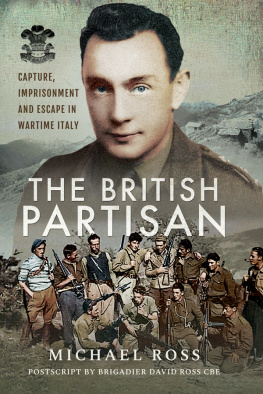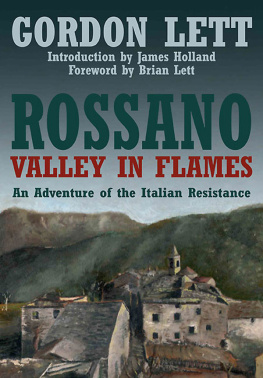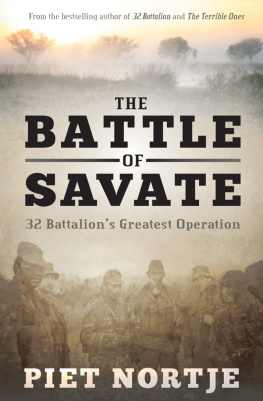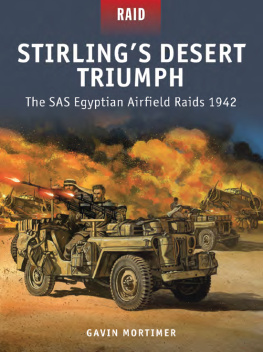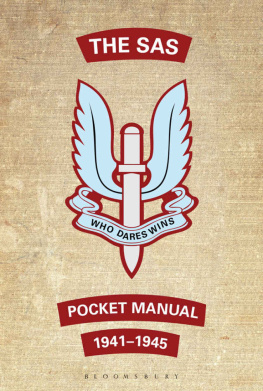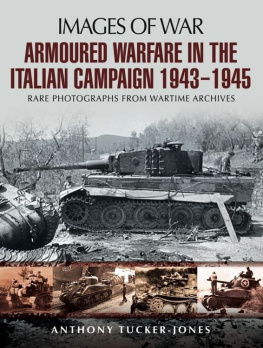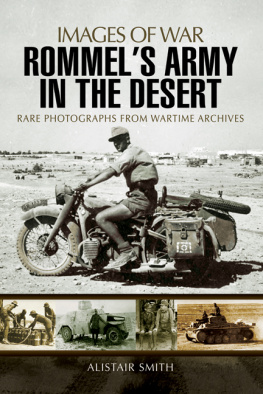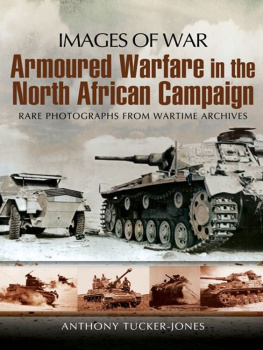Desert Raids with the SAS
Desert Raids with the SAS
Memories of Action , Capture and Escape
The wartime experiences of Major Anthony Hough
by Gerald Hough
First published in Great Britain in 2021 by
Pen & Sword Military
An imprint of
Pen & Sword Books Ltd
Yorkshire Philadelphia
Copyright Gerald Hough
ISBN 978 1 39900 722 1
ePUB ISBN 978 1 39900 723 8
Mobi ISBN 978 1 39900 724 5
The right of Gerald Hough to be identified as Author of this work has been asserted by him in accordance with the Copyright, Designs and Patents Act 1988.
A CIP catalogue record for this book is available from the British Library.
All rights reserved. No part of this book may be reproduced or transmitted in any form or by any means, electronic or mechanical including photocopying, recording or by any information storage and retrieval system, without permission from the Publisher in writing.
Pen & Sword Books Limited incorporates the imprints of Atlas, Archaeology, Aviation, Discovery, Family History, Fiction, History, Maritime, Military, Military Classics, Politics, Select, Transport, True Crime, Air World, Frontline Publishing, Leo Cooper, Remember When, Seaforth Publishing, The Praetorian Press, Wharncliffe Local History, Wharncliffe Transport, Wharncliffe True Crime and White Owl.
For a complete list of Pen & Sword titles please contact
PEN & SWORD BOOKS LIMITED
47 Church Street, Barnsley, South Yorkshire, S70 2AS, England
E-mail:
Website: www.pen-and-sword.co.uk
Or
PEN AND SWORD BOOKS
1950 Lawrence Rd, Havertown, PA 19083, USA
E-mail:
Website: www.penandswordbooks.com
Foreword
I t is a great honour to have been asked to write a foreword for this book as Colonel Commandant of The Rifles. Here we have the remarkable memoir of a Rifleman who was a first-hand witness to a glorious but ferocious period in our regiments history.
I was commissioned into the Royal Green Jackets in 1986 and was brought up on the exploits of men like Tony Hough who were our antecedents in the Rifle Brigade. I was also fortunate enough to get to know Tom Bird, of Snipe action fame, through my father as I graduated from a beater to a gun on Lord Howes shoot in Penn Bottom. Toms modesty was typical of what Gerald Hough captures of that generation and his father in particular in this memoir: despite knowing Tom for ten years through the shoot, it wasnt until he turned up at a Royal Green Jacket Snipe dinner that I made the connection between the Tom I knew and his image in the Terence Cuneo painting of that action that I had seen daily as a young subaltern! Tony Houghs qualities of dash and derring-do and quiet modesty are what we would all aspire to and underpin our regimental motto of Swift and Bold to this day.
When in 2007 our founding regiments formed The Rifles we made a conscious decision to be a forward-looking regiment that was firmly rooted in our past. Memoirs such as this one add to the fabric of our identity and we are much the richer for it. The campaigns of North Africa are of great importance to the identity of The Rifles and we wear them proudly as a battle honour to this day, commemorating the men of the Rifle Brigade, like Tony, and the sacrifices they made.
As you will read, Tonys experiences in the North African desert, a bloody and violent campaign, left an indelible mark on him, a mark that those of us who have seen the ugly realities of war will recognise as unchanging throughout the decades. It is a timely reminder to those that bear this mark that they are not alone and must share the burden which was foisted upon them.
I must also commend Gerald Hough for the manner and rigour in which he has brought his fathers notes to vivid life in this compelling and fascinating book. It is a valuable and precious piece of history that not only pays great tribute to his father, but also to the courageous Italians who aided in his evasion and escape at great personal risk.
General Sir Patrick Sanders KCB CBE DSO ADC Gen
Colonel Commandant
The Rifles
Introduction
T his is a true account of a young mans journey into manhood on the tails of the maelstrom that was the Second World War. It is also an important witness of one of the greatest chapters of that war in North Africa. The tale opens in 1940 with winter warfare training with the 5th Battalion Scots Guards, who were going to assist the Finns in their battle against the Russians, but the Finns entered an armistice with Russia and events moved on. Anthony Hough swiftly found himself in North Africa fighting a heroic holding retreat with B Company, 9th Battalion, Rifle Brigade. Retreat is one of the most difficult phases of warfare. The Battalion was decimated in hand-to-hand fighting. The horror of seeing so much death, especially of close friends and good men, is laid bare. Exposed is the anguishing futility of the ebbs and flows of war, meaning that months later after enormous slaughter one is back fighting in the same place. The constant changing of command led to the 9th Battalion feeling they never belonged. However, the 9th Battalion was involved in a series of military classics and the story provides many accounts of outstanding heroism and sacrifice.
Then in August 1942 after one and half years of fighting, the brave 9th Battalion was dismissed with hardly a thought. Anthony Hough and a number of fellow soldiers then joined 1 SAS in September 1942, wanting to see the campaign in Africa through to its climax. Much of what the SAS were doing was already what the Rifle Brigade had been doing and Anthony Hough fitted easily into the new regiment with many friends and with its much looser command.
Although the 9th Battalion, Rifle Brigade, was unlucky in its early deployment, Anthony Hough was fortunate, almost blessed. So many died around him while he survived.
In his new regiment he was reunited with some from the 1940s winter training with the Scots Guards, such as David Stirling and Carol Mather, and met many new originals, including Paddy Maine, Mike Sadler and others, and of course was reunited with men he had served with in the Rifles. After intense training with the SAS and in the company of such excellent men, it was incredibly exciting. Anthony Houghs summary of the character needed to join the SAS is well observed. The SAS was different, significantly by its lack of structure. Decisions were devolved to the lowest command of six-man sections. They were sent into battle with flamboyant disregard for survival; expecting that each section would find a way through, which of course many did. At the end of November, after their training, B Squadron, 1 SAS, pushed west and were deployed to the operational area between Tripoli and Bouerat, south-east of Misrata, in a critical stage of the campaign. Anthony Hough felt they were made expendable and it was clear that the chances of getting back were slim. Indeed, as it turned out, after a few weeks very few survived death or capture. However, their impact was significant.


